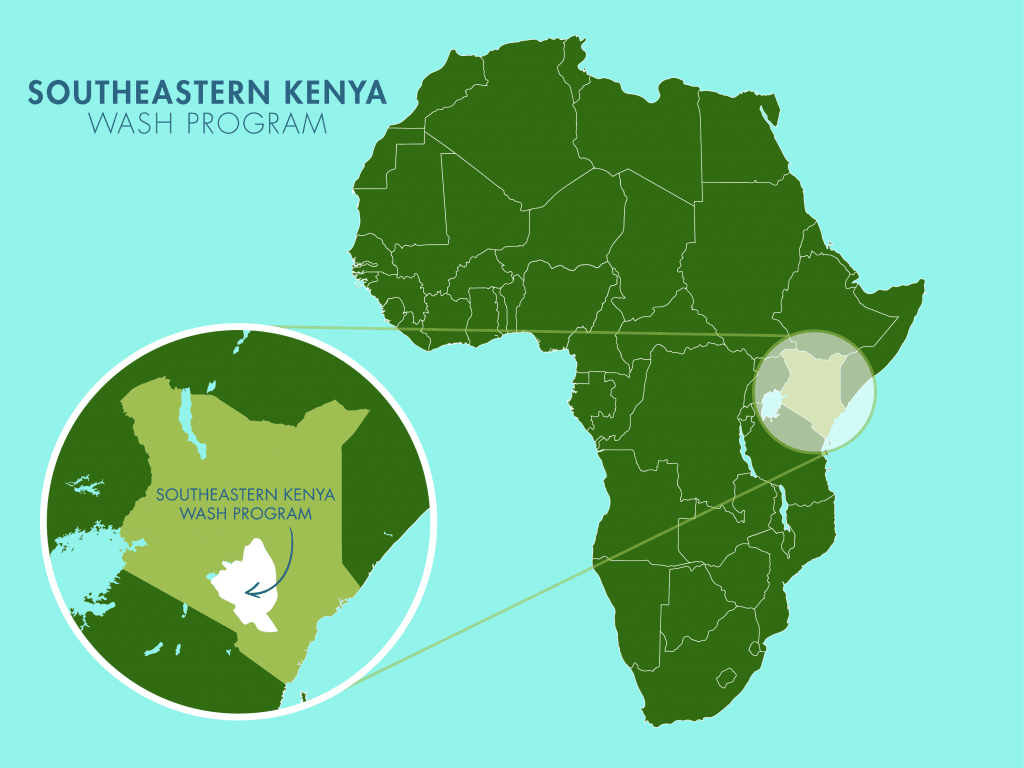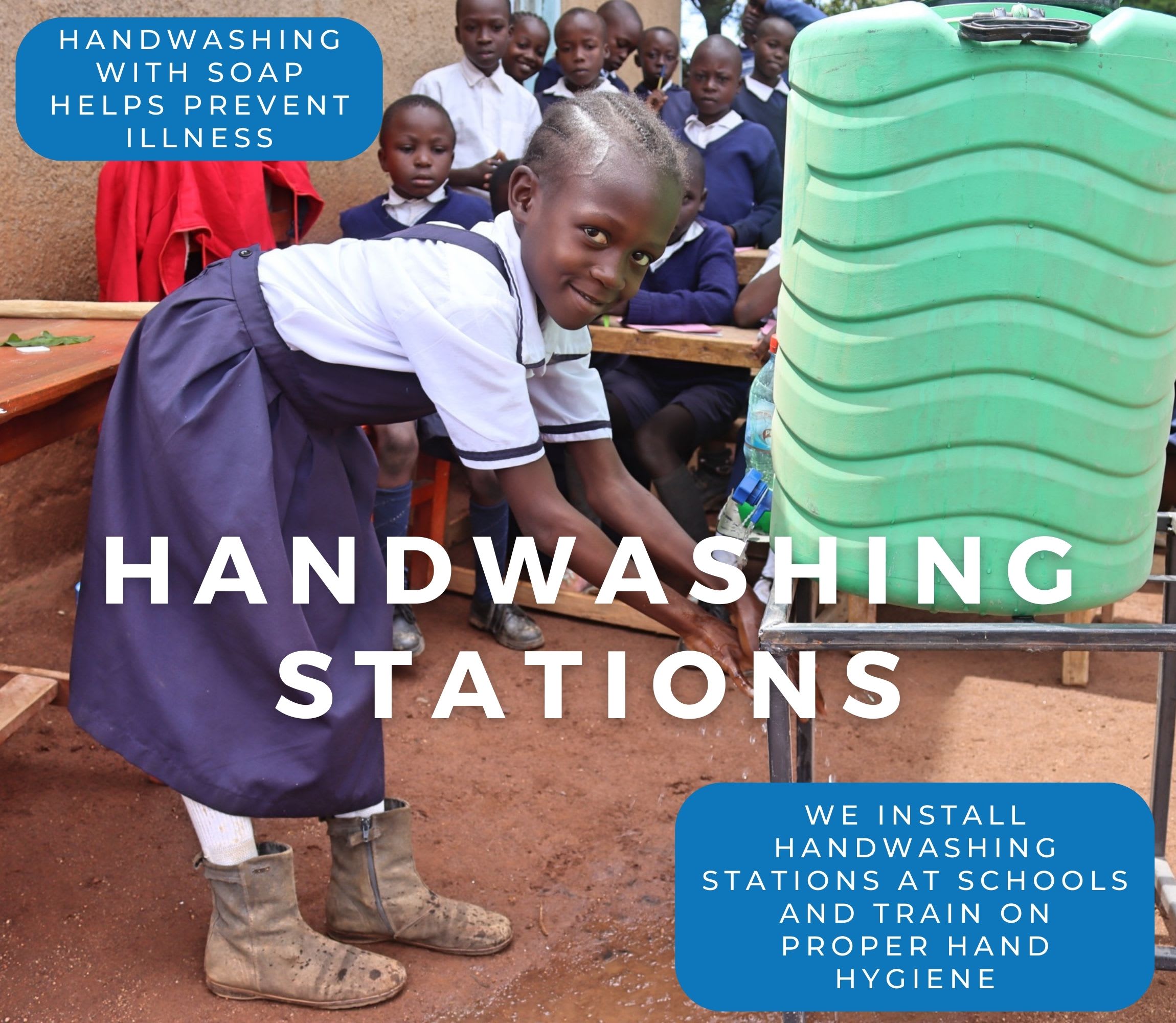August, 2019: Kikuswi Secondary School Project Complete
A new rainwater catchment system was built! Kikuswi Secondary School in Kenya now has the ability to collect 104,000 liters of water – thanks to your generous support. Handwashing stations were installed, and students and staff have received training in sanitation and hygiene. All of these components work together to unlock the opportunity for these students to live better, healthier lives.
Rainwater Catchment Tank
Kikuswi Secondary School is affiliated with the Kyamuisu Self-Help Group, since most of its members’ children attend here. These parents and school administration approached the self-help group committee and requested their help in alleviating the water shortage at the school.
"The school water tank project is a great achievement in this school," said Principal Mule Katundu.

The Construction Process
A meeting with all of the parents and the Head Teacher was then held to plan out the project. Parents agreed to collect construction materials like sand, rocks, and water. On the other hand, we delivered the expertise, tools, lumber, metal, cement, and gutter system.

This tank is a whopping 104,000 liters not because of a large student population, but because of how rarely it rains in Southeastern Kenya. The more water we can store during the seasonal rains, the more water available through the dry months.
Construction for this large rainwater catchment tank is much like the construction of a concrete house. First, the ground is leveled for foundation excavation.

Alternating layers of impermeable rocks are laid upon mortar up to seven feet high, with internal and external diameters of 25 and 28 feet respectively.
A reinforced concrete column is built right up to the center of the tank, which holds up the roof and prevents it from caving in. The walls are then plastered both internally and externally with waterproof cement. After that, several feet of guttering is installed and channeled into the tank. The roofing is made of iron sheets and timber, and has vents to allow rainwater into the tank from the gutters.

"The 104,000-liter tank is a project that we highly value because the academic standards of our school will improve and we will also admit more students over time. Importantly, school hygiene and sanitation standards will improve due to the availability of water," explained Principal Katundu.

New Knowledge
The training was planned by the WASH Officer, Veronica Matolo who coordinated with the area field officer, Rhoda Mwangu and informed her on the scheduled date of the sanitation and hygiene training.
There were 32 males and 37 female students in attendance. The training was also graced by the attendance of a few staff members - 5 male teachers, 2 female teachers, and 2 subordinate staff members. Attendance was not as expected because some students had gone to represent the school in sports activities at a neighboring school. However, the students and staff who participated will share their new knowledge with the rest of the school.

Students learn about proper waste management
The training conditions were bearable due to the provision of shade by trees in the compound. However, there was a bit of distraction from the neighboring primary school with whom the secondary school shares a playing field as the students had come to play during their break time. But we persisted despite the disruptions.
The students were very jovial and interested in the topics of discussion throughout the training. This was observed in their participatory levels as they asked many questions and were also very ready to volunteer during the demonstrative activities such as soapmaking. Boys expressed more interest than the girls.

Handwashing demonstration
“This hygiene and sanitation training that we have had today will change our lives greatly because we will observe the hygiene of not only our bodies but also food, water, and environment," said 17-year-old student Alex Mumo.
We went over topics including:
– Student health club activities
– Disease transmission
– Preventing the spread of disease
– Keeping nails short
– Personal hygiene
– Handwashing
– Water hygiene
– Food hygiene
– Latrine hygiene
– Soapmaking

Student health club members were the ones we taught about soap. Pupils took turns stirring the soap and were very excited about the final product. Local ingredients like ungarol, ufacid, industrial salt, and caustic soda are among the ingredients used to mix this soap. Some of the students told us it was "the most interesting activity" they had ever done. It was interesting to them how the soap formed and how simple it was to produce it. The simplicity of the whole process mesmerized them. Everyone took turns to participate.
"We will make a business out of the knowledge acquired from soap making," said Alex.

"We have learned that we can recycle waste and out of it, make manure that can be helpful to the agriculture students, a practice that we are going to start immediately."
Students portrayed intense seriousness about the training as they also elected some members to chair their health club and ensure hygiene and sanitation are maintained in the school. The health club has a total membership of 13 students and 2 teachers. The teachers will be in charge of the club, and will always guide the students where necessary. The students also agreed that they would plan on the days when they would be meeting to discuss the hygiene and sanitation issues affecting them.
From the look of things, the students and the teachers will implement what they learned during the training.
Handwashing Stations
The new handwashing stations were delivered in time for training so that they could be used for the handwashing demonstration. Each of these has 3 taps so that 6 students can wash their hands at the same time.

Thank You for making all of this possible!


 Rainwater Catchment
Rainwater Catchment
 Rehabilitation Project
Rehabilitation Project


































